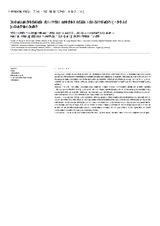Mostrar el registro sencillo del ítem
Spatial interpolation of current airborne pollen concentrations where no monitoring exists
| dc.contributor.author | Oteros, José | |
| dc.contributor.author | Bergmann, Karl C. | |
| dc.contributor.author | Menzel, Annette | |
| dc.contributor.author | Damialis, Athanasios | |
| dc.contributor.author | Traidl-Hoffmann, Claudia | |
| dc.contributor.author | Schmidt-Weber, Carsten | |
| dc.contributor.author | Buters, Jeroen | |
| dc.date.accessioned | 2024-02-08T20:28:12Z | |
| dc.date.available | 2024-02-08T20:28:12Z | |
| dc.date.issued | 2019 | |
| dc.identifier.issn | 1352-2310 | |
| dc.identifier.uri | http://hdl.handle.net/10396/27333 | |
| dc.description.abstract | Background: Pollen is naturally emitted and is relevant for health, crop sciences and monitoring climate change, among others. Despite their relevance, pollen is often insufficiently monitored resulting in a lack of data. Thus, spatial modelling of pollen concentrations for unmonitored areas is necessary. The aim of this study was to develop an automatic system for calculating daily pollen concentrations at sites without regular pollen monitoring. Method: We used data from 14 pollen taxa collected during 2015 at 26 stations distributed across Bavaria, Germany. The proposed system was based on the Kriging interpolation method to spatially model pollen concentrations for unmonitored areas, in combination with regression of environmental parameters. The method also took into account weather effects on daily pollen concentrations. Results: An automatic system was developed for calculating current pollen concentrations at any location of the county. The results were displayed as daily pollen concentrations per m3 in maps of 1 km2 resolution. The models are trained automatically for every day by using the pollen and weather inputs. Automatic inputs will increase the usability of the model. In 50% of the cases, Gaussian Kriging was selected as the optimal model. An R2 of 0.5 is reached in external validation without considering the effect of the weather. An R2 of 0.7 is reached after considering the effect of daily weather parameters. Conclusions: A fully automatic pollen network (ePIN) was built in Bavaria during 2018 that delivers data on-line without delay. The proposed method allows for a comparably small number of automatic devices per study area, but still providing information on pollen on any location in the study area. | es_ES |
| dc.format.mimetype | application/pdf | es_ES |
| dc.language.iso | eng | es_ES |
| dc.publisher | Elsevier | es_ES |
| dc.rights | https://creativecommons.org/licenses/by-nc-nd/4.0/ | es_ES |
| dc.source | Oteros, J., Bergmann, K., Menzel, A., Damialis, A., Traidl‐Hoffmann, C., Schmidt‐Weber, C. B., & Buters, J. (2019). Spatial interpolation of current airborne pollen concentrations where no monitoring exists. Atmospheric Environment, 199, 435-442. https://doi.org/10.1016/j.atmosenv.2018.11.045 | es_ES |
| dc.subject | Pollen | es_ES |
| dc.subject | Geostatistics | es_ES |
| dc.subject | Prediction model | es_ES |
| dc.subject | Automatic forecasting system | es_ES |
| dc.subject | Aerobiology | es_ES |
| dc.title | Spatial interpolation of current airborne pollen concentrations where no monitoring exists | es_ES |
| dc.type | info:eu-repo/semantics/article | es_ES |
| dc.relation.publisherversion | https://doi.org/10.1016/j.atmosenv.2018.11.045 | es_ES |
| dc.rights.accessRights | info:eu-repo/semantics/openAccess | es_ES |

